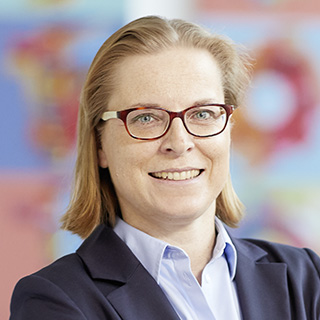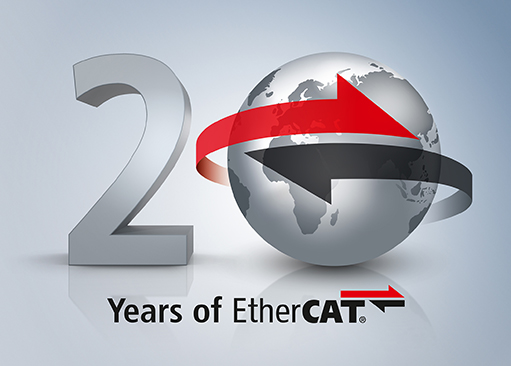The communication system developed by Beckhoff and presented at Hannover Messe 2003 has proven itself as a high-performance real-time Ethernet technology. Indeed, EtherCAT has firmly established its place on the market thanks to its continuity and technical development, and has even become an open IEC standard. Today, EtherCAT offers sufficient performance and innovation potential to handle the next 20 years of high-performance automation.
Beckhoff has always been renowned for high-performance control and the way it continually pushes performance limits in the world of automation. This is all based on the principle of PC-based control technology, which makes it possible to exploit all the advantages of a PC – most notably including the high computing power – directly on the machine. EtherCAT was developed so that the high performance of Ethernet PC interfaces, which were available as standard in the early 2000s, could have an optimal effect on machine automation. Fast-forward 20 years and this is just as true as ever.
That said, the standard Ethernet protocol is designed for the transmission of large amounts of data and long data telegrams, not for the small units of information common in the machine environment, such as a 1-bit limit switch value or a 16-bit analog value. This is where the EtherCAT principles have resulted in an ideal synthesis of both worlds to offer a number of major advantages:
- the standard Ethernet telegram is used so that a special communication card in the master is not required
- with the development of the Fieldbus Memory Management Unit (FMMU), data processing is enabled in the telegram execution, resulting in maximum protocol efficiency without overloading the master
- the point-to-point connection adopted from Ethernet is crucial in ensuring optimum diagnostic possibilities for EtherCAT
- distributed clocks introduced a highly accurate and automatically synchronized system time, thereby providing the basis for modern, time-slice-based control concepts
- as a complement to the well thought-out technology, publication within the EtherCAT Technology Group (ETG) has equally contributed to overall acceptance and success.
One of the unique selling points of EtherCAT is that the technology itself has never had to be changed in over 20 years. The basic protocol contained in the chip has always remained the same and has only ever been extended in a fully backward compatible way. The same applies to Safety over EtherCAT, where backward compatibility is also assured throughout. Even 100 Mbit/s devices can still be integrated and operated in EtherCAT G networks. This means that a current EtherCAT device will still work in a 20-year-old plant. It also means that EtherCAT technology does not create bottlenecks in the control architecture, and for most applications, this will continue to be the case with 100 Mbit/s. As for EtherCAT G, this offers sufficient potential to also meet all the high-end requirements of the next 20 years without any problems and without a break in technology.

Trade Press, Magazine PC Control
Stefan Ziegler
Beckhoff Automation GmbH & Co. KG
Hülshorstweg 20
33415 Verl
Germany

Trade Press and Business Press
Vera K. Schnatmeyer
Beckhoff Automation GmbH & Co. KG
Hülshorstweg 20
33415 Verl
Germany
